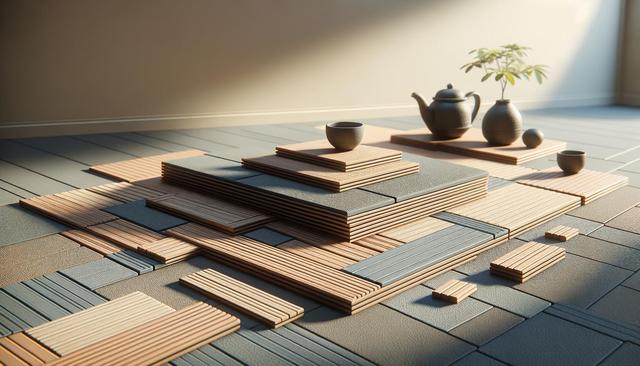Understanding the Material and Its Benefits
Rubber floor tiles are made from either natural or synthetic rubber and are designed to withstand high levels of foot traffic and impact. One of the standout qualities of rubber flooring is its resilience. It bounces back from compression, making it ideal for environments where people stand or move around frequently. Whether used in gyms, playrooms, or garages, these tiles help reduce fatigue and offer a comfortable surface underfoot. Additionally, rubber is naturally slip-resistant, contributing to a safer environment, especially in areas prone to moisture or spills.
Another key advantage is its sound-dampening properties. Rubber can absorb noise, which is particularly beneficial in multi-story buildings or high-activity zones. Its insulation qualities also help regulate temperatures, providing a more comfortable space year-round. These characteristics, combined with its eco-friendliness—especially if made from recycled materials—make rubber floor tiles a sustainable option for many applications.
Where Rubber Floor Tiles Work Best
Rubber floor tiles are incredibly versatile and suitable for a range of environments. In fitness centers and home gyms, they offer shock absorption and noise reduction, creating a user-friendly workout area. Their durability makes them ideal for garages and workshops, where heavy equipment and tools are frequently used. In children’s play areas, the cushioning effect of rubber provides a safer surface that can help reduce the risk of injury during falls.
These tiles are also a practical option for commercial spaces such as entryways, retail stores, and schools. Their ability to withstand constant use without significant wear means they offer long-term value. Additionally, the ease with which damaged tiles can be replaced individually adds to their practicality.
- Home gyms and fitness centers
- Garages and industrial workshops
- Children’s play areas
- Educational and healthcare facilities
- Retail and commercial spaces
Design and Customization Options
Rubber floor tiles are not only functional but can also be visually appealing. Available in a wide range of colors, textures, and patterns, they can be chosen to match the decor of any room or commercial space. Some tiles even mimic the appearance of other materials, like stone or wood, offering aesthetic flexibility without compromising on performance.
Interlocking designs are among the most popular formats, allowing for quick and easy installation. This makes it possible for property owners to alter the layout or replace tiles without professional help. For spaces that require a specific look or branding, custom color options and inlaid designs are also available. This level of customization makes rubber tiles a suitable choice for businesses that want to reinforce their visual identity through interior design.
- Wide color and texture selection
- Custom inlays and branding options
- Interlocking systems for DIY installation
Installation and Maintenance
Installing rubber floor tiles is generally straightforward, particularly with interlocking or puzzle-style tiles. These can often be laid directly over existing flooring with minimal preparation. For more permanent installations, adhesives may be used to secure the tiles in place. Regardless of the method, the flexibility of rubber allows it to contour slightly to uneven surfaces, reducing the need for extensive subfloor preparation.
Maintenance is equally simple. Most rubber tiles require only regular sweeping and occasional mopping with a mild detergent. Their non-porous surface helps resist staining and makes cleanup easy. In the event of damage, individual tiles can often be removed and replaced without disturbing the rest of the floor. This makes rubber flooring a cost-effective choice over time compared to wall-to-wall carpeting or traditional hard flooring that may require complete replacement when damaged.
- Easy to install with interlocking edges
- Low maintenance needs
- Resistant to stains and spills
- Individual tile replacement is simple
Environmental and Health Considerations
Many rubber floor tiles are made from recycled materials, such as old vehicle tires, giving them a second life and reducing environmental waste. Choosing flooring made from post-consumer or post-industrial rubber supports sustainability initiatives, which is increasingly important for both consumers and businesses. Additionally, rubber flooring often meets indoor air quality standards, as it emits low levels of volatile organic compounds (VOCs), making it safer for enclosed spaces.
For spaces like daycare centers, schools, or healthcare facilities, these health-conscious features are particularly valuable. Moreover, rubber flooring’s hypoallergenic properties can contribute to a cleaner indoor environment by resisting the growth of mold, mildew, and allergens. When selecting rubber tiles, it’s worth checking for third-party certifications that verify environmental and health claims, ensuring the product aligns with your values and needs.
- Made from recycled and sustainable materials
- Low VOC emissions
- Hypoallergenic and mold-resistant
- Ideal for sensitive or enclosed environments







